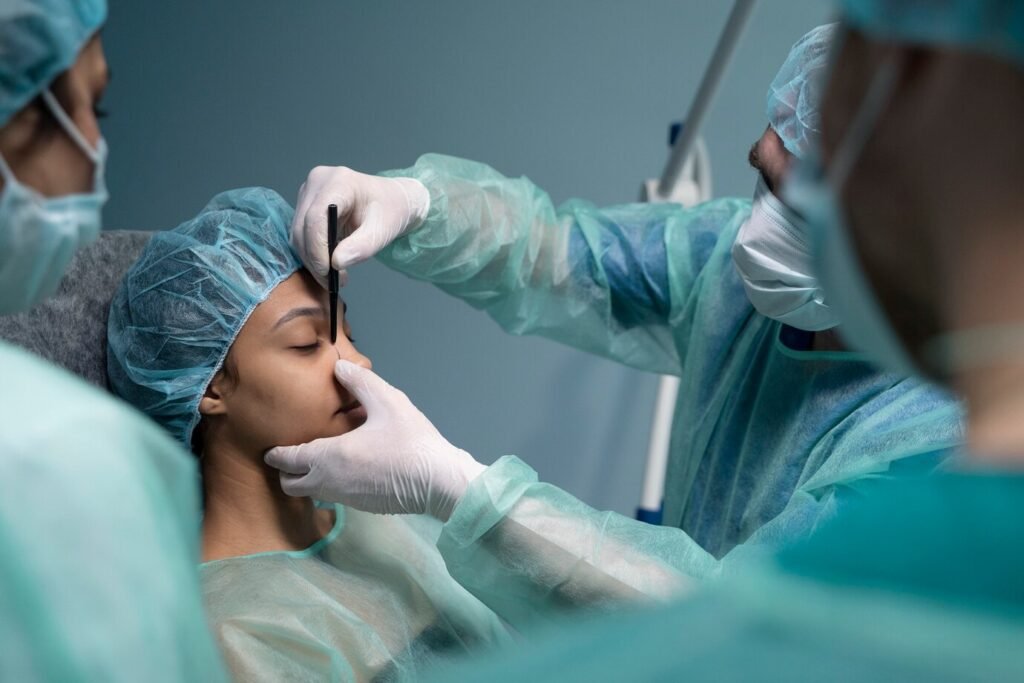Medical tourism for cosmetic surgery is on the rise, and one of the most sought-after procedures among international patients is the SMAS facelift—a deep-layer facelift that targets the underlying muscle and connective tissue for longer-lasting, natural-looking results. South Korea has become a top destination for this advanced facial rejuvenation surgery, offering world-class medical care at a fraction of the price found in Western countries.
If you’re considering traveling to Korea for a SMAS facelift, this comprehensive guide will walk you through everything you need to know—from choosing the right clinic to understanding the recovery timeline and navigating your stay.
🧠 What Is a SMAS Facelift?
The SMAS (Superficial Musculoaponeurotic System) facelift involves lifting not just the skin but also the deeper facial tissue and muscles. This allows surgeons to:
- Restore youthful contours
- Reduce sagging around the mid-face, jowls, and neck
- Achieve natural, longer-lasting results compared to traditional skin-only facelifts
Because the SMAS layer is lifted and repositioned, patients avoid the overly “tight” look associated with older facelift methods.
🌏 Why Korea Is a Top Destination for SMAS Facelifts
✅ Expertise
Korean plastic surgeons are globally recognized for:
- Specializing in facial aesthetics
- Performing hundreds of facelifts annually
- Using advanced variations like high-SMAS or extended-SMAS techniques
✅ Cost Savings
A SMAS facelift in Korea typically costs $6,000–$12,000 USD, compared to $15,000–$25,000+ in the U.S. or Europe.
✅ State-of-the-Art Clinics
Many Korean clinics offer:
- In-house operating rooms
- 3D imaging and surgical planning
- Luxurious patient lounges and private recovery suites
✅ International Patient Support
Most leading clinics provide:
- English-speaking coordinators
- Online consultations
- Visa support
- Recovery packages for foreign patients
✈️ Preparing for Your Trip: What You Need to Know
📆 How Long to Stay in Korea
You’ll need approximately 10–14 days in Korea:
- Pre-op consultation & tests: 1–2 days
- Surgery & recovery: 7–10 days
- Suture removal & follow-up: Day 7–10 post-op
Some patients stay longer for comfort, but most are safe to fly after 10–14 days.
📄 Visa & Entry Requirements
- K-ETA (Korea Electronic Travel Authorization) is available for many nationalities
- If your country requires a visa, request a medical visa invitation letter from your clinic
- Ensure your passport is valid for at least 6 months
Tip: Always check updated COVID-19 and health-related entry rules before departure.
🔍 Choosing the Right Clinic
Look for:
- Board-certified plastic surgeons (especially with KSPRS certification)
- High volume of SMAS facelift cases
- Before-and-after galleries showing natural outcomes
- Online consultation options and virtual assessments
Questions to Ask During Consultation:
- What technique will be used (e.g., high-SMAS, extended-SMAS)?
- Will neck lifting be included?
- What is the estimated recovery time?
- Are post-op treatments included?
🧳 What to Pack for Your SMAS Facelift Trip
- Button-up shirts (easier to put on post-surgery)
- Compression band or chin strap (clinic may provide)
- Cold packs and travel pillow
- Medication & supplements (check what’s allowed into Korea)
- Basic skincare products (fragrance-free)
- Translation apps (if needed for daily errands)
🏨 Accommodations & Transportation
Where to Stay
Choose hotels or Airbnbs in:
- Gangnam, Apgujeong, or Sinsa (close to most top clinics)
- Look for properties with:
- Elevators
- Quiet surroundings
- Proximity to pharmacies and convenience stores
Some clinics offer medical concierge services or recommend affiliated recovery hotels with medical staff on standby.
🏥 What to Expect During Your Stay
Day-by-Day Overview
Day 1–2
- Arrival in Korea
- Pre-surgical consultation
- Medical checkup and imaging
Day 3
- Surgery day (usually under IV sedation or general anesthesia)
- Overnight stay at clinic
Day 4–7
- Swelling and tightness peak
- Daily or every-other-day clinic visits for post-op care
- Use of cold compress and light dressings
Day 8–10
- Suture removal
- Swelling begins to subside
- Cleared to fly home (with doctor’s approval)
💆 Recovery Tips While in Korea
- Sleep elevated (2-3 pillows) to reduce swelling
- Avoid salty foods and alcohol
- Walk lightly indoors to promote circulation
- Don’t apply makeup until cleared by your surgeon
- Follow all aftercare instructions and medication schedules
Many Korean clinics offer post-op add-ons like LED healing therapy or herbal de-swelling treatments to speed up recovery.
🧾 Aftercare and Flying Home
Before departure:
- Surgeon will remove sutures and assess healing
- Receive a post-op care kit and written recovery instructions
- Follow-up plans may include video consultations or messaging apps
💡 Pro Tip: Wear sunglasses, a mask, and a hat when traveling home—most patients look presentable by Day 10.
📝 Final Thoughts
Traveling to Korea for a SMAS facelift is a smart decision if you’re seeking world-class results, highly skilled surgeons, and a supportive environment at an accessible price. With the right planning, you can turn your surgery trip into a smooth, safe, and transformative experience.
✔️ Quick Travel Checklist for SMAS Facelift in Korea
| Task | Timeline |
|---|---|
| Research clinics | 1–2 months in advance |
| Schedule online consultation | 4–6 weeks before |
| Apply for visa/K-ETA | 3–4 weeks before |
| Book flights and hotel | 3–4 weeks before |
| Prepare travel essentials | 1 week before |
| Stay in Korea | 10–14 days |
| Return home with follow-up plan | Post-op Day 10–14 |




